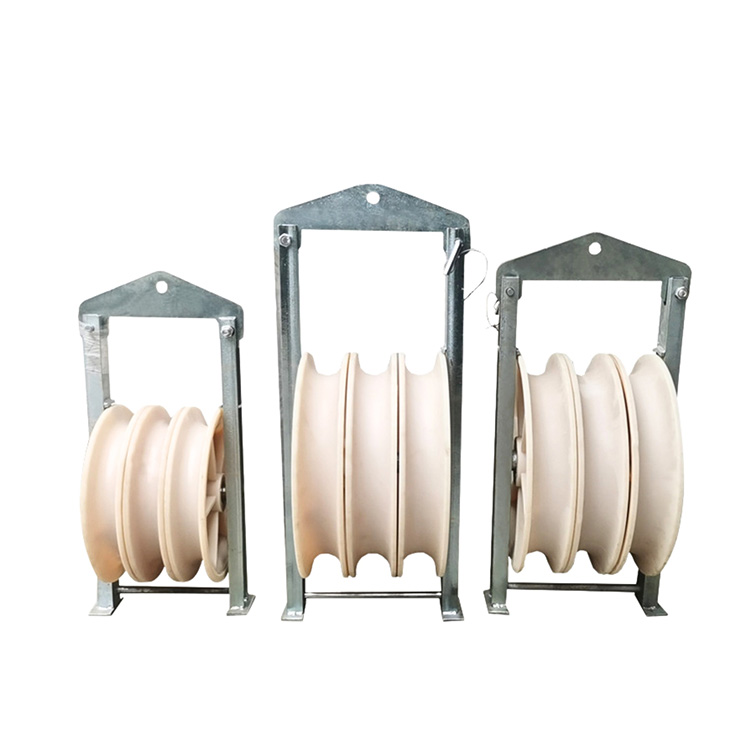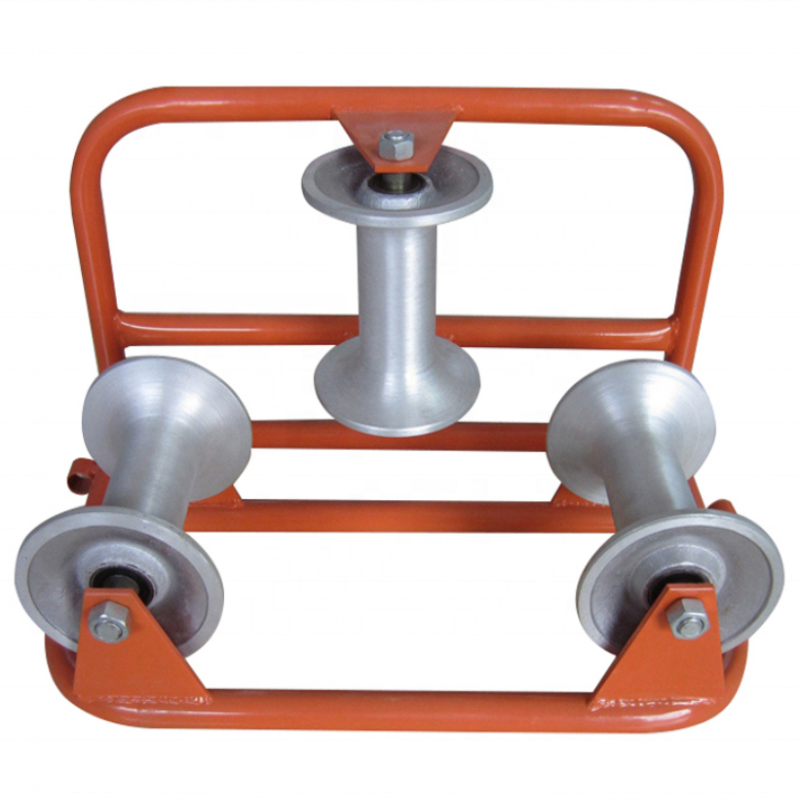Types of Cable Laying Rollers for Underground and Overhead Lines
Author:jiujiu Release time:2025-11-06 18:00:13 Number of views:58order
Efficient and safe cable installation requires specialized equipment that can handle cables gently yet firmly. Among these essential tools, the Cable Laying Roller plays a key role in ensuring that cables are pulled smoothly, reducing stress and friction that can damage insulation or outer sheathing.
As a professional China cable laying roller manufacturer and bulk supplier, our production facility focuses on engineering durable, corrosion-resistant rollers that meet the diverse needs of underground and overhead cable systems worldwide.


1. What Is a Cable Laying Roller?
A Cable Laying Roller is a guiding device that supports and directs cables during installation. It prevents the cable from contacting rough terrain or sharp edges, helping maintain its circular profile and electrical integrity.
By providing a smooth rolling path, cable rollers significantly decrease pulling tension, allowing cables to be installed faster, safer, and with minimal manual force.
2. Major Types of Cable Laying Rollers
Different installation conditions require specific roller designs. Below are the most commonly used types in both underground and overhead applications.
a. Straight Line Rollers
These rollers are used along flat or straight trench routes. Their sturdy steel frame and nylon or aluminum rollers ensure the cable runs smoothly without excessive drag.
·Best for: Straight trench sections
·Advantage: Reduces cable friction and maintains alignment
b. Corner or Angle Rollers
When the cable route changes direction, corner rollers (also called bend rollers) come into play. They guide the cable through turns while preventing flattening or jacket stress.
·Best for: Cable route curves or directional changes
·Advantage: Prevents bending stress and surface scuffing
c. Manhole and Duct Entry Rollers
These rollers are positioned at the entrance or exit of ducts, tunnels, or manholes. They assist in inserting or removing cables without scraping against the edges.
·Best for: Cable feeding through ducts or chambers
·Advantage: Protects cable surface and reduces insertion force
d. Bridge or Lead-In Rollers
Placed between the cable drum and the trench, lead-in rollers control the cable’s approach angle, reducing excessive bending or friction.
·Best for: Start points of trenches or reels
·Advantage: Ensures smooth transition from drum to ground
e. Multiple Roller Assemblies
For large-diameter or heavy power cables, multiple rollers are mounted in sequence to share the load. These assemblies stabilize movement and prevent cable deformation.
·Best for: Long-distance power transmission projects
·Advantage: High load capacity, better cable support
f. Overhead Line Rollers
Used in aerial installations, overhead rollers are typically mounted on poles or brackets. They guide cables between towers while maintaining safe tension and alignment.
·Best for: Overhead power and telecommunication lines
·Advantage: Lightweight, corrosion-proof, and easy to operate at height
3. Construction and Material Features
High-quality Cable Laying Rollers are built to withstand heavy workloads and harsh outdoor environments. Manufacturers typically use:
·Frames: Powder-coated or galvanized steel for superior strength
·Roller Surfaces: Nylon, rubber, or aluminum for low-friction contact
·Bearings: Sealed bearings for smooth, maintenance-free operation
·Load Rating: Optimized to match cable size and tension needs
Leading China manufacturers employ advanced CNC machining and anti-rust coatings to ensure long service life and stable performance, even in wet or dusty job sites.
4. How Cable Laying Rollers Boost Installation Efficiency
Using the right cable rollers dramatically improves work efficiency and reduces wear on both cables and pulling machinery.
·Lower Friction: Reduces energy and time required for cable pulling
·Improved Safety: Minimizes risk of insulation damage and tripping hazards
·Longer Equipment Life: Decreases strain on winches and pulling devices
·Consistent Alignment: Keeps cables on a uniform path, ensuring reliable laying quality
Proper roller placement can improve productivity by 30–40%, especially in long trench or tower line projects.
5. Selecting a Reliable Cable Laying Roller Manufacturer
Choosing the right supplier ensures stable performance and dependable delivery timelines. A reputable China cable laying roller factory typically provides:
·Custom design services for specialized cable diameters or terrains
·Bulk manufacturing capability for large-scale infrastructure projects
·Strict quality control systems with CE/ISO certifications
·Technical support for installation and maintenance
Working directly with a China manufacturer offers cost advantages, customization flexibility, and guaranteed after-sales support — vital for long-term project reliability.
6. Maintenance and Handling Tips
Even the most durable rollers require regular maintenance to stay in optimal condition:
·Inspect bearings and frames before every project
·Clean rollers frequently to remove mud and debris
·Replace worn or dented rollers promptly
·Store in dry, shaded areas after use
Routine maintenance helps prevent friction build-up and ensures consistent rolling performance during every installation.
Conclusion
A Cable Laying Roller is an indispensable component for both underground and overhead line projects. Each type—straight, corner, manhole, lead-in, or overhead—serves a specific purpose in guiding and protecting cables during installation.
As a China cable laying roller manufacturer and bulk supplier, our factory focuses on high-precision engineering, quality materials, and customer-oriented service to ensure efficient, reliable, and cost-effective solutions. Whether you’re managing a small telecom job or a high-voltage transmission network, using the proper Cable Laying Roller system can significantly improve your workflow, extend cable lifespan, and enhance project safety.
References
GB/T 7714:Yang C J, Hong D F, Ren G X, et al. Cable installation simulation by using a multibody dynamic model[J]. Multibody System Dynamics, 2013, 30(4): 433-447.
MLA:Yang, Cai Jin, et al. "Cable installation simulation by using a multibody dynamic model." Multibody System Dynamics 30.4 (2013): 433-447.
APA:Yang, C. J., Hong, D. F., Ren, G. X., & Zhao, Z. H. (2013). Cable installation simulation by using a multibody dynamic model. Multibody System Dynamics, 30(4), 433-447.







